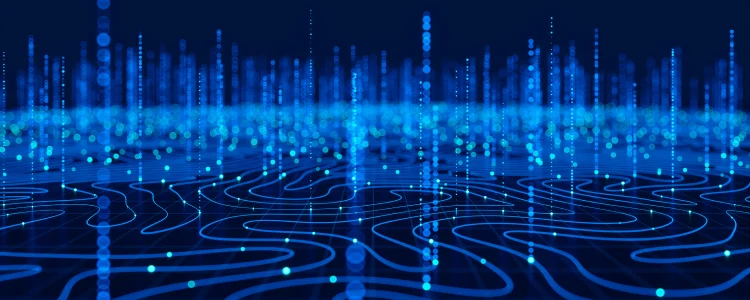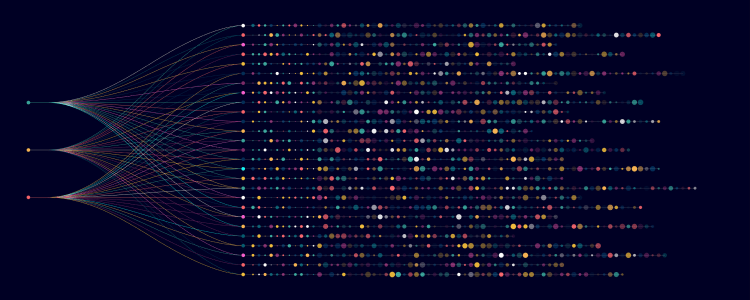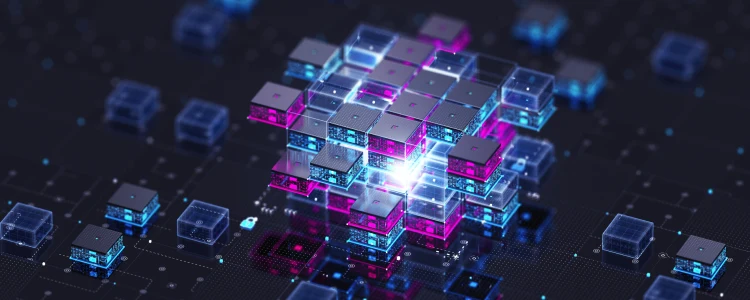What is a Neural Network and How Does it Work?

When it comes to developing the infrastructure required for neural networks, ServerMania is one of the leaders in the industry, relying on extensive experience in providing high-performance infrastructure for a wide array of artificial intelligence and machine learning applications; from GPU server hosting to server clusters, to advanced cloud-based solutions. We know what kind of critical hardware and computing resources make neural networks work efficiently. Furthermore, we help customers understand the idea behind neural networks, types, and the importance for contemporary AI.
Neural networks provide the foundation for a collection of algorithms that recognize patterns and take their inspiration from the structure of the human brain. They are basically the backbone of any artificial intelligence system and machine learning system and epitomize the use of data processing in machines, which may eventually replace human decision-making. From healthcare to finance, neural networks are finding their way into a wide range of applications, so grasping how they work is relatively fundamental to any business that’s planning on using AI in their corporate function.
Neural Networks Explained: A Conceptual Primer
Both the structure and functionality of neural networks are taken from the human brain. The human brain contains billions of neurons, each connected with several thousand neurons. Artificial neural networks model this structure by being composed of artificial neurons set up in layers. These nodes then elaborate and forward information within the network to allow for pattern recognition, predictions, and learning from data.
Each layer in artificial neural networks is connected to each node in successive layers, simulating the synaptic connection between neurons in a biological brain. These nodes receive data inputs, process them through an activation function and a weighted summation, and pass on the results to successive layers. Such nodes within a network work together to learn patterns within data. In the case of deep learning used for recognizing images, for instance, early layers may only consider simple patterns such as edges or textures, while deeper layers recognize shapes or objects. With time, the network begins to compensate for the weights and biases of these interconnections through a type of learning called backpropagation, refining accuracy in pattern recognition and making predictions.
How Neural Networks Function
More abstractly, artificial neural networks are usually made up of three important layers: the input layer, the hidden layers, and the output layer. They normally would be distinguished from each other by their function.
- Input Layer: This is the layer where data comes in. Each and every single input node in an input layer represents one feature of the data. In the case of image recognition, every pixel of that image would be one input node.
- Hidden Layers: These layers are stacked between the input and output layers. It takes input and has processing or transformation effects on data. A neural network might have more than one hidden layer, depending on how complex the task may be, which provides the possibility of modeling complex patterns.
- Output Layer: An outcome, a classification, a prediction, or a decision is yielded by the output layer.
Each connection between neurons has an associated weight that is modified during some form of training process. In other words, the network minimizes any error in the network’s predictions, using an optimization algorithm, or backpropagation, by adjusting these weights.
Key Components of a Neural Network
The real structure of neural networks is far from the complexity of a human brain; it merely consists of layers of interconnected nodes, or neurons. This process is essentially based on adapting those weights through some sort of training process. Many key components make a functional neural network, each influencing how the network will process inputs, learn from errors, and eventually produce accurate outputs. Understanding these components is crucial to understanding how neural networks work and achieve such performance. The components of neural networks can be simply explained in three sections:
- Activations: They essentially give the decision for whether the interconnected nodes should “fire” and send information across the whole network and they introduce non-linearity into the system for the network to pick up more complex patterns.
- Loss Function: It provides an idea of how much the output of the network corresponds to what is expected. Training is based on the principle that there is a need to minimize this loss function.
- Backpropagation: This is the procedure used for updating weights in the network. It allows modifying weights of computation by means of the gradient of the loss function, and modification of the weights with a view to ensuring good network performance.

Types of Neural Networks
There are several architectures of neural networks targeted at the solution of particular types of problems. The structure, flow of data, and the learning mechanism varied in each kind of network make it more applicable to a certain task that ranges from simple classification to complex tasks like image recognition, language processing, and prediction over sequences. A few of the most usable types of neural networks are the following:
Feedforward Neural Networks(FNN)
In the Feedforward network, taken to be the basic form of a neural network, the nodes are designed to propagate data directly from one layer to another. No loop or cycle is involved in it. It finds its major application in image classification and speech recognition.
Convolutional Neural Networks(CNN)
First and foremost, Convolutional neural networks find major applications in image processing and computer vision. They are made up of special layers known as convolutional layers, which have the inherent capability to view necessary features from an image, such as edges or textures. This constitutes CNN as very powerful in the performance of such tasks as face recognition, object detection, and medical image analysis.
Recurrent Neural Networks(RNN)
Essentially, Recurrent neural networks are for sequential data processing, for either temporal such as time series or natural language. Loops may also be an inherent part of their architecture, allowing information to persist across time steps. That is why speech recognition, language modeling, and time-series forecasting are ideal applications for them.
Long Short-Term Memory (LSTM) Networks
Long Short-Term Memory is a special type of RNN that can learn long-term dependencies. Their applications are especially appropriate for cases where there is the need to consider context over longer spans of time, such as in language translation and speech to text applications.
Generative Adversarial Networks
It includes two networks: a generator and a discriminator. The generator generates synthetic data, while the discriminator evaluates whether the data is real or fake. GANs also have wide applications in creative domains like generating realistic images and designing art, apart from applications in data augmentation and unsupervised learning.
Autoencoders
Other applications of autoencoders have been done for data compression, noise reduction, etc., which are divided into two units: an encoder unit that compresses the input to a compact version and a decoder unit that merges the energy from this compact version to reconstruct the input. The two major applications of autoencoders are anomaly detection and feature extraction.

Applications of Neural Networks
Applications of neural networks have stretched across many industries. Some prominent ones are listed below:
Healthcare: Diagnostics of medical images, predictive analytics in patient outcomes, and assisting in drug discovery are driven by neural networks.
Financial Services: Neural networks power improvements in decision making and the reduction of risk across a wide variety of applications within financial services. Fraud detection is obviously one of the most critical areas of use, these systems watch transactions in real time for suspicious activities and flag them in their tracks. Trained on volumes of historical data, neural networks learn subtle patterns indicative of fraud.
Manufacturing: With neural networks, manufacturing can optimize production processes, predict equipment failure, and improve supply chain efficiency. Indeed, through the analysis of data coming from sensors and machinery, they can do fine tuning on production lines to produce efficiently. Neural networks allow for predictive maintenance, where manufacturers will be able to appreciate when an accident is most likely to occur and do the necessary repairs before problems strike in order to avoid costly downtimes. They promote better supply chain management through demand forecasting, inventory optimization, and ensuring more efficient logistics, making the whole process of manufacturing affordable and reliable.
Retail: Neural networks in retail enhance the customer experiences through personalization and give way to improved demand forecast. Based on customer behavior in analyzing products, the network suggests those that meet individual preferences, hence a way of leading to higher satisfaction and greater sales. They optimize pricing strategies by forecasting trends and market dynamics.
Science and Technology: Neural networks are among the key drivers of progress in science and technology, research into complicated data sets, and the simulation of complex system tasks. For instance, a number of them range from biology, physics, to chemistry, where they are applied on newly discovered materials, forecasts of experimental outcomes, even modeling molecule behavior for designing drugs.
Cloud Computing: Neural networks keep cloud computing effective and secure. In this regard, they apply to the optimisation of computing resources by trying to forecast user demand and fitting it with server capacity. This would keep smooth performance during high demand and avoid waste when demand is low. These also apply in cloud security while detecting unusual activities and finding the potential threats against a cyber attack before it gets the chance to do some serious damage.
Complex Systems and Complex Analysis: The works in recent times have indicated the trend of an increase in the application of neural networks to describe and understand complex systems, such as climate models, economic systems, and social network filtering. These systems are difficult to investigate analytically due to the large number of variables interacting among each other, and also due to the unpredictability of their behaviors. Neural networks can help in unsurfacing hidden patterns, making nonlinear behavior predictions, and even glimpses into how those systems could evolve with time.
Deep Learning Networks: Deep learning is a category of neural networks and deep neural networks that have totally revolutionized many industries through their power in image and speech recognition and, natural language processing. In health, they have been able to realize diseases from medical images with incredible accuracy. They produce realistic images, music, and even text in the field of entertainment proof that AI driven creativity has no limits. Equally amazing, deep learning drives a few innovations making virtual assistants, self driving cars, and advanced robotics even more brilliant to the extent that machines can be left more independent to deal with challenging tasks on their own.
Neural Networks and Server Infrastructure
Large-scale neural networking involves high loads on computational resources; this is where ServerMania steps in. Complex calculations involving deep learning model training require high-performance servers, especially those that contain high-powered GPUs.

Why ServerMania for AI and Machine Learning Infrastructure?
Dedicated Servers: High-Performance dedicated servers for maximum processing of AI workloads. Drive huge datasets and complex models with our dedicated servers for all your processing needs. Learn more about our dedicated servers today.
GPU Server Hosting: Faster training in AI and machine learning is developed when you make use of ServerMania’s Nvidia GPU servers. Find out what GPU server hosting has in store for you, with ServerMania?
Clustering of Servers: Organizations working on highly complex AI models need scaling servers that are necessary for efficient training and deploying neural networks. Get more information about our GPU server clusters.
Conclusion
Neural networks drive modern AI, and the applications in every sector just continue to swell. As these technologies grow further, so does the demand for large scale server infrastructure that can support computationally expensive needs. At ServerMania, we provide the dedicated servers, GPU hosting solutions, and GPU server clusters that a business requires to drive AI projects forward.
Look to our resources on GPU Server Hosting for Artificial Intelligence and Machine Learning, Cloud-Based Quantum Machine Learning, and best GPU Servers for AI and Machine Learning to learn more about the best options in servers. Or book a free consultation to speak with one of our experts about your next project.
Was this page helpful?

